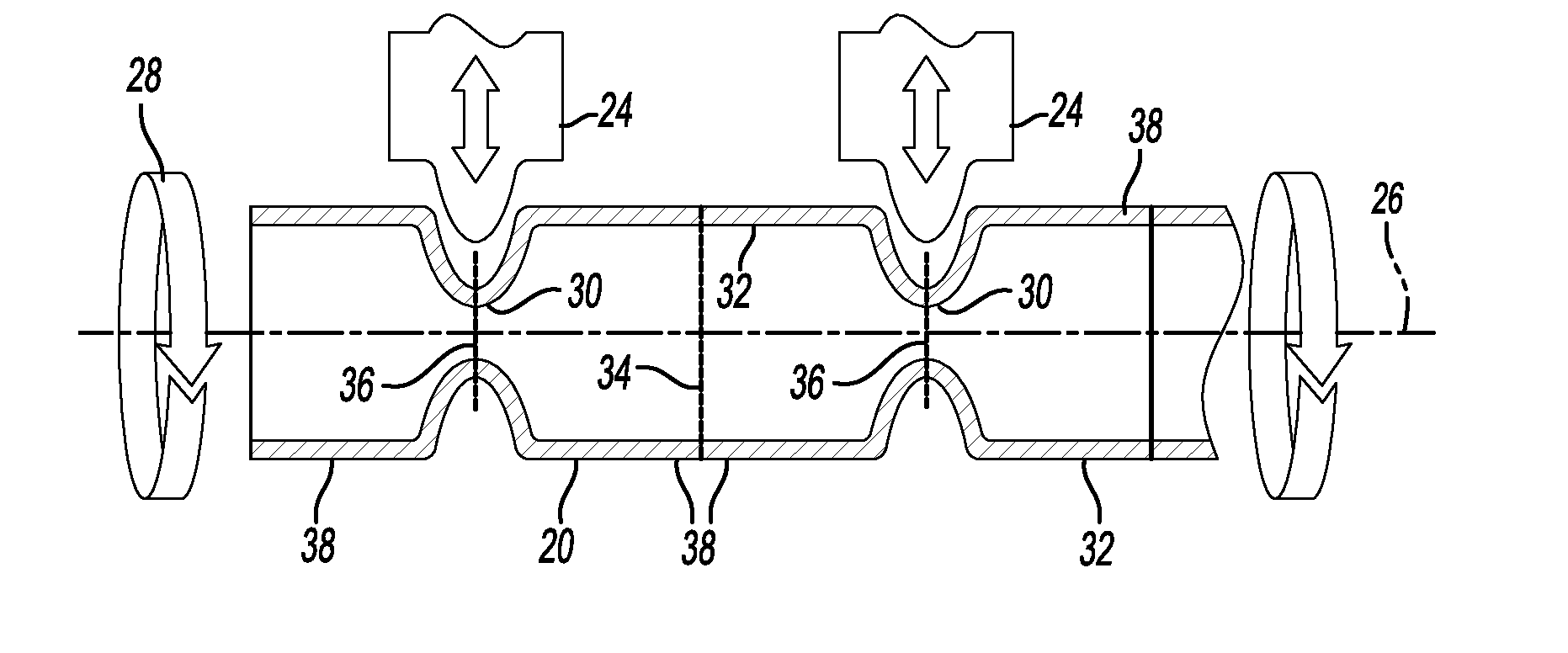Method of forming industrial housings
a technology of industrial housing and housing plate, which is applied in the direction of gearing, other domestic objects, mechanical equipment, etc., can solve the problems of slow manufacturing, increase manufacturing cost, and both methods of forming housing plate have known drawbacks, so as to achieve cost savings, material savings, and greater thickness
- Summary
- Abstract
- Description
- Claims
- Application Information
AI Technical Summary
Benefits of technology
Problems solved by technology
Method used
Image
Examples
Embodiment Construction
[0022]FIG. 1 illustrates a conventional steel pipe or tube 20 which may be utilized in the method of forming a housing of this invention. The conventional steel tube or pipe 20 has an axial or longitudinal bore 22 and may be formed of any steel, including low and high carbon steels and high strength low alloy (HSLA) steels depending upon the ultimate application of the housing. The diameter and thickness of the tube wall will also depend upon the application and may range for example from 1 mm to 0.5 inches. The tube 20 may include a welded seam (not shown) but the tube may also be seamless depending upon the application. However, a welded seam tube is significantly less expensive than a seamless tube and a welded seam tube is suitable for most applications.
[0023]FIG. 2 illustrates one step in the method of forming a housing of this invention, wherein a plurality of rollers 24 roll form the steel tube 20 radially inwardly. In a preferred embodiment, the rollers 24 extend generally p...
PUM
| Property | Measurement | Unit |
|---|---|---|
| thickness | aaaaa | aaaaa |
| diameter | aaaaa | aaaaa |
| strength | aaaaa | aaaaa |
Abstract
Description
Claims
Application Information
 Login to View More
Login to View More - R&D
- Intellectual Property
- Life Sciences
- Materials
- Tech Scout
- Unparalleled Data Quality
- Higher Quality Content
- 60% Fewer Hallucinations
Browse by: Latest US Patents, China's latest patents, Technical Efficacy Thesaurus, Application Domain, Technology Topic, Popular Technical Reports.
© 2025 PatSnap. All rights reserved.Legal|Privacy policy|Modern Slavery Act Transparency Statement|Sitemap|About US| Contact US: help@patsnap.com



